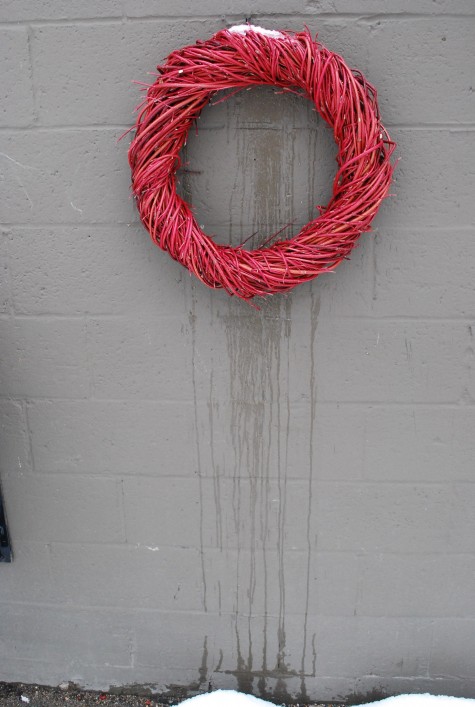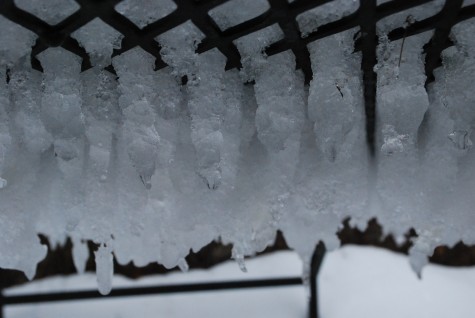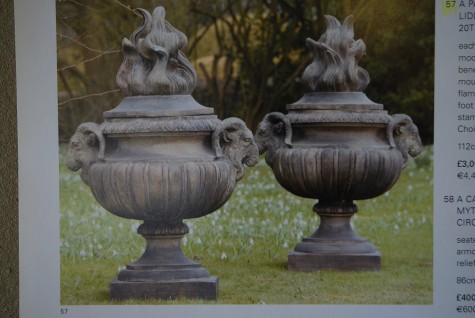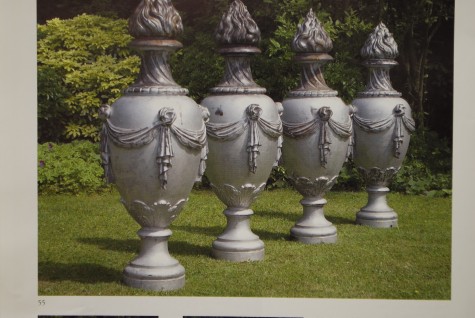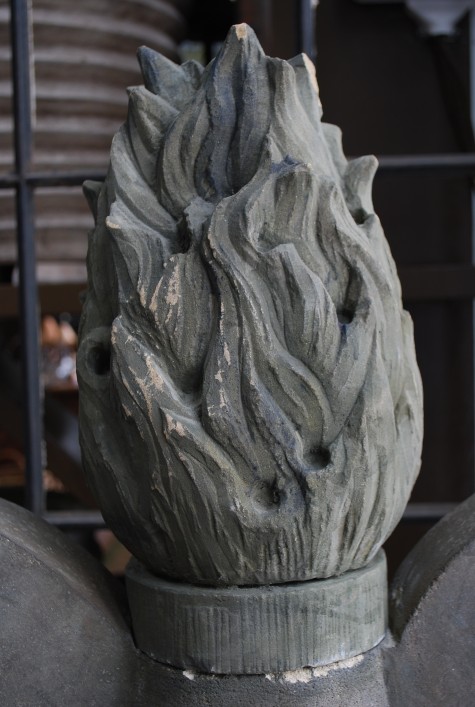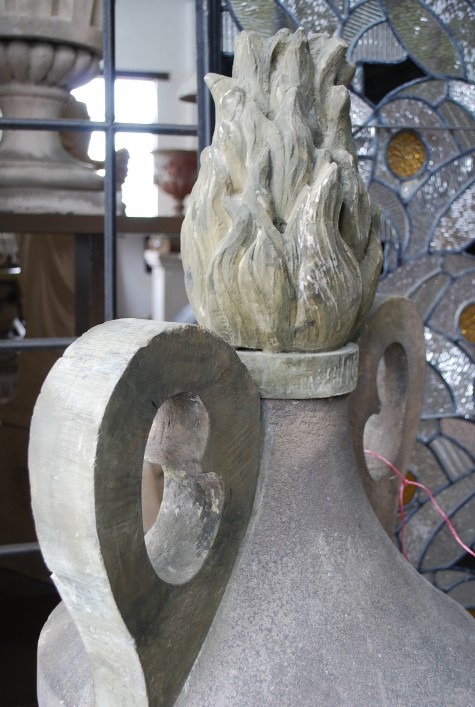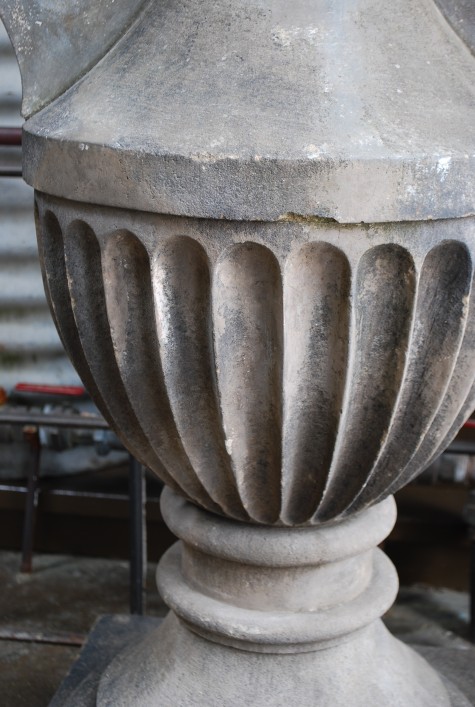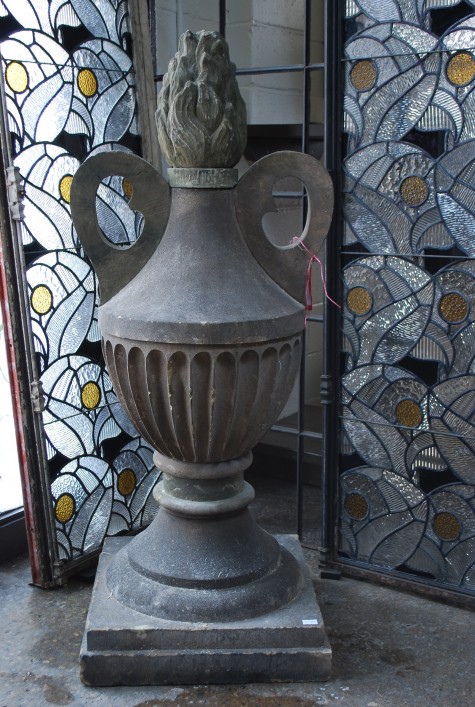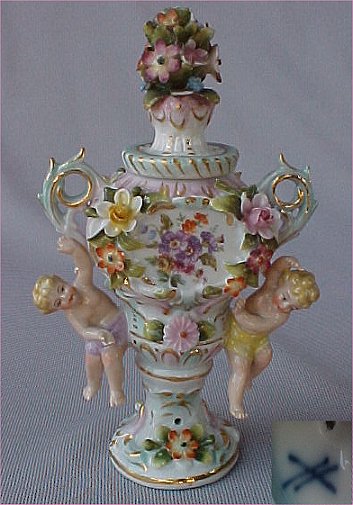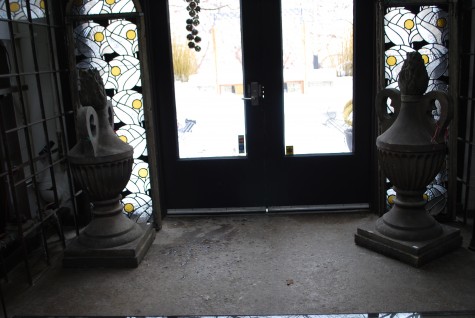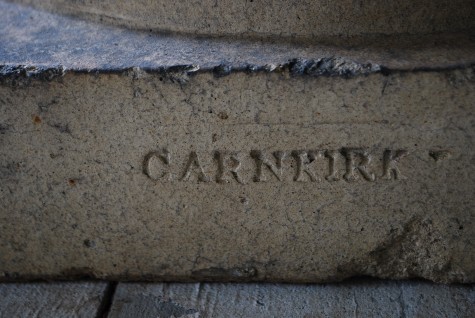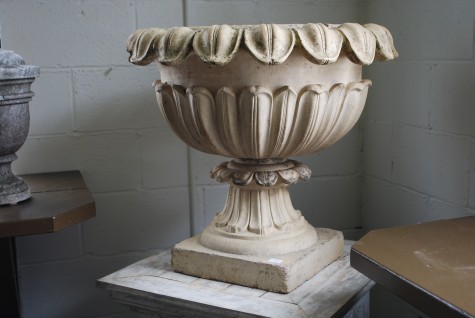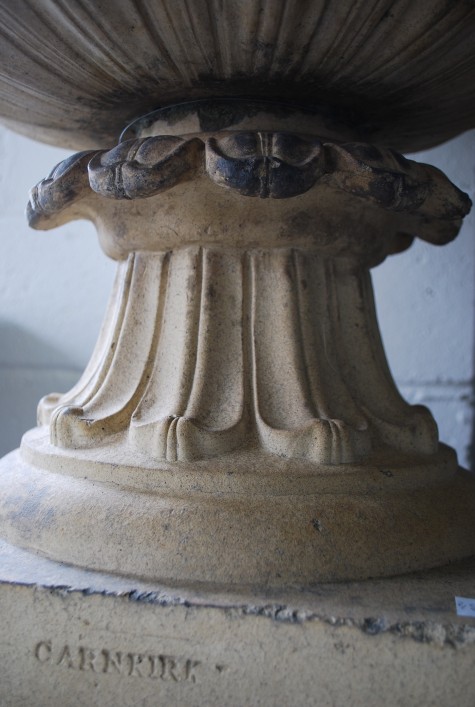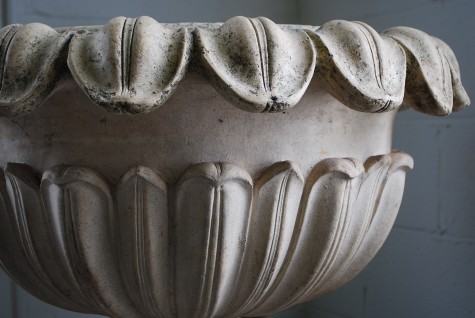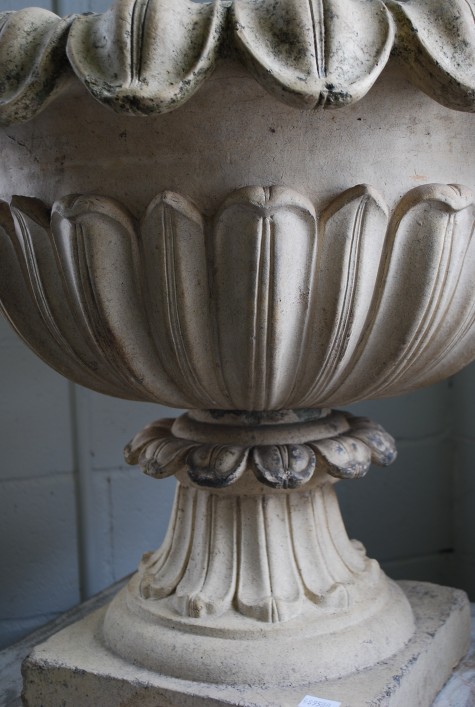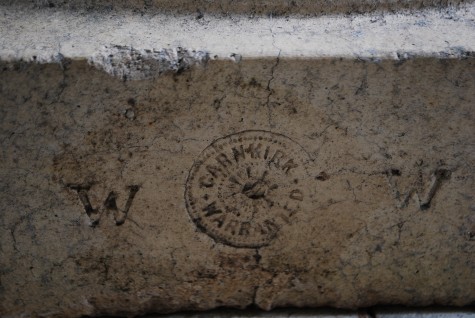I have never been a fan of plants in the air. By this I mean hanging baskets of plants. God knows plenty of people like them- the glass airspace of all of my local nurseries are awash in them come spring. Some baskets go home and get transplanted into a container, or in the ground. Fine. But not all get a thoughful or beautiful placement. In my own neighborhood, I see the occasional 10″ diameter hanging basket plopped without further ado into 8″ diameter pots. Picture this-a pot, with a glaringly white plastic hat and purple petunias on top. Some of the baskets are not set level-picture a white plastic hat, askew, atop a container. Some white plastic baskets are hung from their hangers so close to a porch overhang I cannot imagine how they will get light, much less be watered. In my opinion, none of these options are a good look.
I understand the economics of a 10″ white plastic basket. They do not occupy precious greenhouse floor space. Small trailing plants have the luxury to grow vigorously in a generous airborne soil space-a bigger plant fetches a better price. People anxious to get a leg up on a short northern season will pay more for a plant with a growing history; pregrown, as it were. Greenhouse growers, they like the plastic, and the white color-as well they should. Plastic is lightweight, and readily handled. By this I mean filled with soil, planted, and hung up. Any growing operation involves lots of steps, lots of care, lots of time and lots of hands. As efficiently as a growing operation can be handled matters much to the bottom line. My line of work has put me in contact with countless growers and nurseries. It matters little whether you are growing 1 gallon perennials, 5 gallon shrubs, hanging baskets of annuals, vegetables or trees-growing professionally is a staggeringly labor intensive and risky vocation. What if the weather does not cooperate? What if the drought kills your rhododendron seedlings? What if the buying public passes by every basket of million bells you have grown? That white plastic hanging basket of annuals in the spring greenhouse airspace is engineered to provide a grower with optimum conditions to grow a large crop. White plastic reflects light. This means any given basket will need water on a manageable schedule. The basket can be easily gotten down for a customer. The plants get the best light available. Every greenhouse grower deals with all of the issues of any restaurant chef, times 10. A chef gets to pitch what is out of date. A grower furthermore spends lots of time dealing with aging material. I only regret the baskets do not come with an explanatory note. The container in which this plant has been grown was selected in the interest of efficient growing only.
The hundred of white plastic planted bowls that we know as hanging baskets are held aloft via an adaptation of the coathanger; this utilitarian part pains me. A coathanger belongs in a closet, does it not? This is just the beginning of my discontent. Plants root in the earth, and the earth is at grade-right? Containers have a point of connection to the ground plane. Hanging baskets-what is the good idea behind plants in the air? I have a tough time answering this question reasonably-but that is based on many years of instinctive prejudice against them. Plants in airborn dirt-something seems wrong about this to me.
Any instinctive prejudice-I have time in late February to reflect. The snow is still piled miles high in Michigan; I have time to review my assumptions about gardening. Those weather people are predicting our two days of thaw will be followed by 2 inches of snow. This prediction makes me want to weep. It is almost the 1st of March-can the winter not make a move to let go? In a calmer moment, I would suggest there are those activities that can make the winter prison time go faster. In a perfect world, every gardener would examine their prejudices, and move off of them. In the interest of bringing a little fresh thought to some of my own cold and stale toast, and in the interest of amusing myself, I am rethinking my ideas about hanging baskets. Why so, this February 26th?
My grower has called my hand. He is planting his hanging baskets for spring this week. He has invited me to come over, and get my hands dirty. He has made it clear. “So Deborah, if the hanging baskets available in my greenhouse in the spring are not to your taste, what would you plant? What is your idea? If you had to have some hanging baskets in your garden this year, what would be planted in them? Consider this a formal invitation.” It would be very unsporting of me to refuse, would it not?
This coming Friday I will be designing and planting hanging baskets. I am rather looking forward to it.


